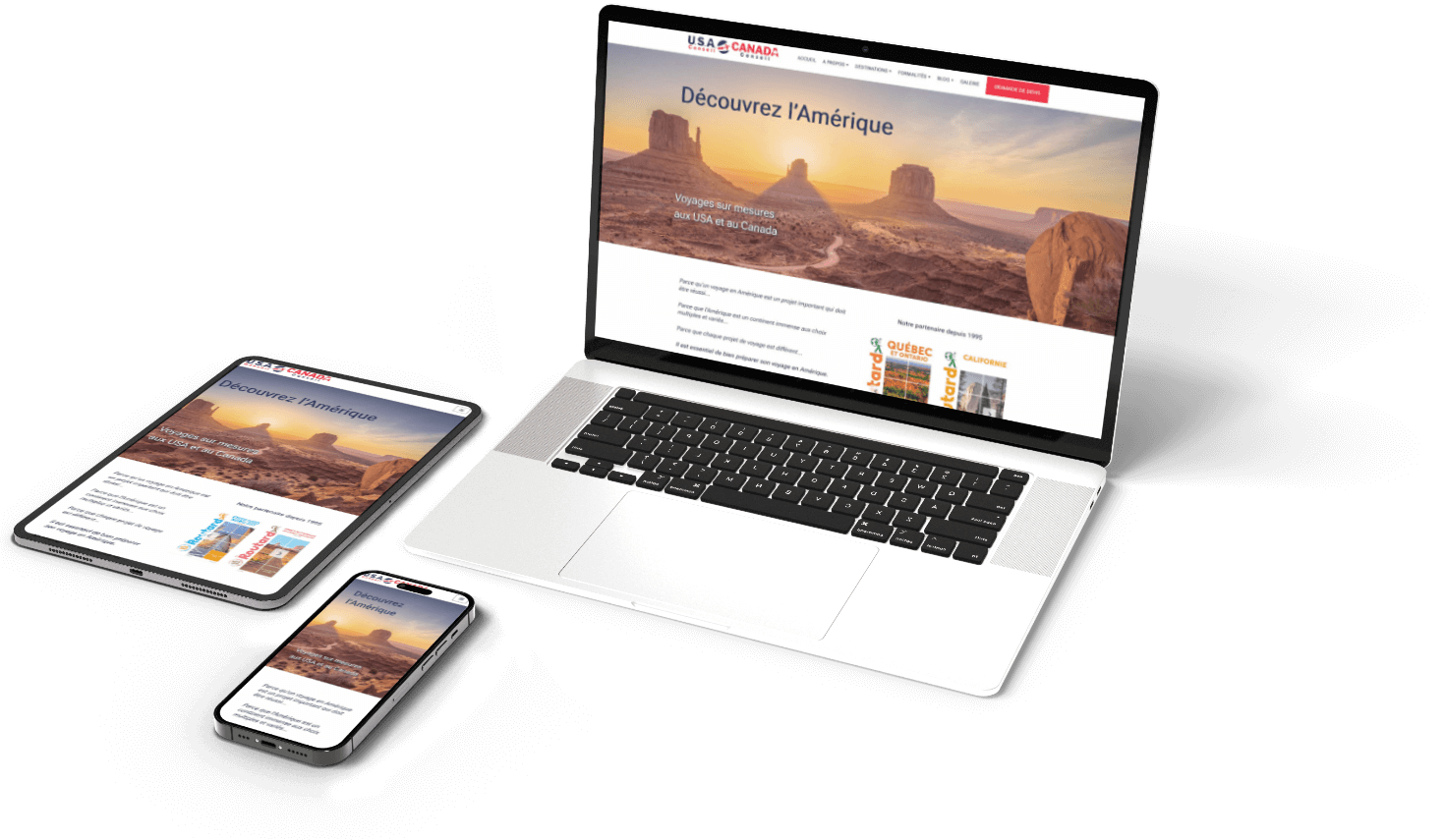
7 Warning Signs Your Website Needs a Redesign in 2026
Your website is often the first impression potential customers have of your business. If it’s outdated, slow, or difficult to use, you’re likely losing customers and revenue. In 2026, with evolving user expectations and technology, knowing when to redesign is crucial for business success.
This guide reveals the 7 warning signs that indicate your website needs a redesign, helping you make informed decisions about your digital presence. Before redesigning, understand what a website should cost.
Warning Sign #1: Poor Mobile Experience
The Problem: Your website doesn’t work well on mobile devices.
Why It Matters:
- 65% of web traffic is mobile
- Google uses mobile-first indexing
- Poor mobile experience increases bounce rate by 61%
- Mobile users expect fast, touch-friendly interfaces
Signs to Look For:
- Text too small to read on mobile
- Buttons too small to tap easily
- Horizontal scrolling required
- Slow loading on mobile networks
- Forms difficult to fill out on mobile
Quick Test:
- Visit your website on your phone
- Try to complete your main call-to-action
- Check if all content is readable without zooming
- Test navigation and forms
Impact on Business:
- Lost mobile customers (potentially 40%+ of your audience)
- Lower search rankings due to mobile-first indexing
- Poor user experience leading to negative brand perception
- Reduced conversions from mobile users
Warning Sign #2: Slow Loading Times
The Problem: Your website takes too long to load.
Why It Matters:
- 1-second delay reduces conversions by 7%
- 3-second delay increases bounce rate by 32%
- Page speed is a Google ranking factor
- Users expect pages to load in under 3 seconds
Signs to Look For:
- Pages taking more than 3 seconds to load
- Images loading slowly or not at all
- Users complaining about slow performance
- High bounce rates on key pages
- Poor Core Web Vitals scores
Quick Test:
- Use Google PageSpeed Insights
- Test with GTmetrix
- Check on different devices and networks
- Monitor user feedback
Learn to fix speed issues in our Core Web Vitals guide.
Impact on Business:
- Lost revenue from impatient users
- Poor SEO rankings due to slow speed
- Negative user experience and brand perception
- Competitive disadvantage against faster sites
Warning Sign #3: Outdated Design and Branding
The Problem: Your website looks old and doesn’t reflect your current brand.
Why It Matters:
- First impressions matter in 0.05 seconds
- Outdated design reduces credibility by 75%
- Modern design increases user trust
- Brand consistency is crucial for recognition
Signs to Look For:
- Design looks like it’s from 5+ years ago
- Inconsistent branding across pages
- Outdated color schemes or fonts
- Poor visual hierarchy
- Generic or template-looking design
Quick Test:
- Compare your site to competitors
- Ask for honest feedback from customers
- Check if design reflects current brand guidelines
- Look for visual inconsistencies
Impact on Business:
- Reduced credibility and trust
- Poor brand perception among visitors
- Lost competitive advantage
- Difficulty attracting modern customers
Warning Sign #4: Low Conversion Rates
The Problem: Your website isn’t converting visitors into customers.
Why It Matters:
- Conversion rate directly impacts revenue
- Poor conversion means wasted traffic
- User experience affects conversion rates
- Clear calls-to-action are essential
Signs to Look For:
- Conversion rate below industry average
- High bounce rates on key pages
- Low time on site
- Few form submissions or inquiries
- Low engagement with content
Quick Test:
- Check Google Analytics for conversion rates
- Compare to industry benchmarks
- Test your main call-to-action
- Analyze user behavior flow
Impact on Business:
- Lost revenue from poor conversions
- Wasted marketing spend on traffic that doesn’t convert
- Missed business opportunities
- Difficulty measuring marketing ROI
Warning Sign #5: Declining Traffic and Search Rankings
The Problem: Your website is losing visibility in search results.
Why It Matters:
- Organic traffic is often the largest source of visitors
- Search rankings affect business visibility
- SEO factors change over time
- Competitors may be outranking you
Signs to Look For:
- Declining organic traffic over 6+ months
- Lower search rankings for target keywords
- Fewer backlinks and mentions
- Poor technical SEO health
- Competitors ranking higher
Quick Test:
- Check Google Search Console
- Monitor keyword rankings
- Analyze competitor performance
- Review technical SEO issues
Impact on Business:
- Reduced online visibility
- Lost organic traffic and potential customers
- Increased marketing costs to compensate
- Competitive disadvantage in search results
Warning Sign #6: Technical Problems and Errors
The Problem: Your website has technical issues that affect functionality.
Why It Matters:
- Technical problems hurt user experience
- Broken functionality reduces conversions
- Security issues can damage reputation
- Outdated technology creates vulnerabilities
Signs to Look For:
- Broken links throughout the site
- Forms not working properly
- Images not loading correctly
- Security warnings in browsers
- Outdated plugins or software
Quick Test:
- Use tools like Screaming Frog to find broken links
- Test all forms and functionality
- Check for security issues
- Review error logs
Impact on Business:
- Poor user experience and frustration
- Lost conversions from broken functionality
- Security risks and potential data breaches
- Negative brand perception from technical issues
Warning Sign #7: Negative User Feedback
The Problem: Users are complaining about your website.
Why It Matters:
- User feedback indicates real problems
- Negative feedback can spread quickly
- Customer satisfaction affects business success
- User experience directly impacts conversions
Signs to Look For:
- Complaints about website usability
- Negative reviews mentioning website issues
- Support tickets about website problems
- Low user satisfaction scores
- Users unable to complete desired actions
Quick Test:
- Survey your customers about website experience
- Monitor online reviews and feedback
- Check support tickets for website issues
- Conduct user testing sessions
Impact on Business:
- Damaged reputation and brand image
- Lost customers due to poor experience
- Negative word-of-mouth marketing
- Difficulty attracting new customers
How to Assess Your Website
1. Conduct a Website Audit
Use These Tools:
- Google PageSpeed Insights for performance
- Google Mobile-Friendly Test for mobile experience
- WAVE for accessibility issues
- Screaming Frog for technical SEO
- Google Analytics for user behavior
2. Gather User Feedback
Methods:
- Customer surveys about website experience
- User testing sessions with real users
- Online reviews and feedback analysis
- Support ticket analysis
- Social media monitoring
3. Competitive Analysis
Compare:
- Design quality and modern appearance
- Page speed and performance
- Mobile experience and responsiveness
- User experience and navigation
- Content quality and relevance
When to Redesign vs. When to Update
Redesign When:
- Multiple warning signs are present
- Major technical issues exist
- Brand has significantly changed
- Competitive disadvantage is clear
- User feedback is consistently negative
Update When:
- Minor issues can be fixed quickly
- Content updates are needed
- Small design tweaks will help
- Performance optimization is needed
- Budget is limited for full redesign
Planning Your Website Redesign
1. Define Your Goals
- What problems are you trying to solve?
- What success looks like
- Who your target audience is
- What actions you want users to take
2. Set Your Budget
- Redesign costs typically range from $5,000-$50,000+
- Consider ongoing maintenance costs
- Factor in content updates and testing
- Plan for post-launch optimization
3. Choose Your Approach
- DIY redesign (limited scope, basic needs)
- Freelancer (custom needs, budget-conscious)
- Agency (comprehensive solution, ongoing support)
- Hybrid approach (some DIY, some professional help)
Redesign Timeline
Phase 1: Planning (2-4 weeks)
- Goals definition and requirements gathering
- User research and competitive analysis
- Content audit and planning
- Technical requirements definition
Phase 2: Design (4-6 weeks)
- Wireframing and information architecture
- Visual design and branding
- User experience optimization
- Mobile-first design approach
Phase 3: Development (6-8 weeks)
- Frontend development and coding
- Backend development and functionality
- Content management system setup
- Testing and quality assurance
Phase 4: Launch (2-4 weeks)
- Final testing and bug fixes
- Content migration and updates
- Launch and go-live
- Post-launch monitoring and optimization
Measuring Redesign Success
Key Metrics to Track:
- Conversion rate improvement
- Page load speed optimization
- Mobile usability scores
- User engagement metrics
- Search ranking improvements
- Customer satisfaction scores
Expected Improvements:
- 20-40% increase in conversion rates
- 50%+ improvement in page load speed
- Better user experience scores
- Improved search rankings
- Positive user feedback
Conclusion
Recognizing the warning signs that your website needs a redesign is crucial for maintaining a competitive online presence. By addressing these issues proactively, you can:
- Improve user experience and satisfaction
- Increase conversions and revenue
- Enhance brand credibility and trust
- Stay competitive in your market
- Future-proof your digital presence
Don’t wait until it’s too late. If you’re seeing multiple warning signs, it’s time to start planning your website redesign.
Ready to redesign your website? Contact us for a free website audit and custom redesign strategy. Explore current web design trends or check our web design services.
Remember: A website redesign is an investment in your business’s future. The cost of not redesigning often exceeds the cost of redesigning.




